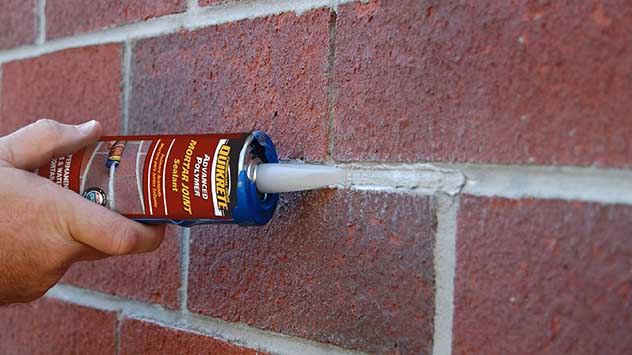Changing the mortar color on a fireplace gives a room a fresh look without breaking the bank. Mortar, the material that bonds bricks or stones together, plays a large role in a fireplace’s structural integrity and style. By altering its color, you can dramatically transform the appearance of your fireplace and, by extension, the entire room. This guide will walk you through the process of changing fireplace mortar color, from preparation to maintenance, helping you tackle this project with confidence.
Mortar and Its Impact on Fireplace Design
Mortar is more than just a functional element in masonry—it is an integral part of a fireplace’s design. The color of mortar can either complement or contrast with the bricks or stones, significantly influencing the overall look of the fireplace. Think about how the new color will interact with the existing materials and the room’s decor.
Changing the color of your mortar can make fireplace bricks appear more vibrant or subdued, altering the entire vibe of your living room. If you wish for a more rustic, aged look, a darker mortar provides that charm. Conversely, a lighter mortar makes a fireplace appear modern and clean. Have clear design goals so you can make an informed choice about which color to go for.
Methods for Changing Mortar Color
There are two primary methods for changing the color of fireplace mortar: using muriatic acid to lighten existing mortar or applying a new layer of tinted mortar. Each method has its advantages and disadvantages. The choice between these methods depends largely on the condition of the existing mortar and the degree of color change desired.
Using Muriatic Acid
Muriatic acid can lighten mortar joints if the current color is too dark for your taste. If you want to lighten your mortar up a bit, purchase a 10% solution of muriatic acid and follow these steps.
- Apply the solution to the mortar joints using a small bristle brush or similar tool.
- Allow the acid to stay on the mortar joints for at least 5 minutes or until it has stopped fizzing. Pay close attention to how long you leave muriatic acid on the mortar, as it can damage the stone or brick if you leave it on too long.
- Rinse the area entirely and allow it to dry. You may need to wait a few days for it to dry completely to see if the process worked.
- If the mortar has lightened, but you’d like it to be even lighter, apply another acid treatment.
Applying a New Mortar Layer
Add a new layer of mortar for more dramatic color changes or to cover cracked or crumbling mortar. With the right materials and preparation, you can repoint your fireplace yourself.
- Thoroughly scrub and wash the brick.
- Remove about 1/4 inch of the existing mortar with a hammer and chisel.
- Wet the joints.
- Fill the joints and any gaps between the firebox floor and hearth with caulk.
- Pack soft mortar firmly into place.
- Wipe away the remaining residue with a damp sponge after the drying process is complete.
If you plan to tint the mortar with a powdered pigment, test the color beforehand. Make a few test samples and apply them to a board or piece of scrap wood. Mortar typically lightens as it dries, so allow your samples to dry completely before moving forward with a color choice.
Allow adequate drying time before exposing the new mortar to heat from fires.
Tips for Success
For best results when changing fireplace mortar color, keep these tips in mind:
- Work in small sections to maintain control over the process. This allows for precise application and consistent results.
- For lighter mortar, use white or gray cement instead of standard gray. White cement can create brighter and more vibrant shades.
- Mix in white or buff-colored sand to achieve lighter shades. The type of sand used significantly influences the final color.
- Allow adequate drying time before exposing the new mortar to heat or moisture. This lets the mortar set properly and retain its color and strength.
- Check the weather forecast. Allow several days of dry weather for the new mortar to properly cure before exposing it to rain or sprinklers.
Maintaining Fresh Mortar
After changing the mortar color, proper maintenance will preserve the new look. To keep your fireplace looking its best, avoid lighting fires for at least five to seven days after applying new mortar. Giving the mortar ample time to cure prevents cracks and premature deterioration.
Sweep the fireplace instead of washing it to avoid the erosion of the mortar. Apply a sealant every two to three years to protect against moisture damage. Regularly inspect the mortar for signs of wear or damage and promptly address minor issues to prevent them from becoming major problems.
Detailing Inspections
Routinely checking for cracks or signs of moisture helps you catch issues early. Look out for small cracks that could expand or areas where the mortar appears damp or discolored, indicating potential water damage. Timely repairs save you from more extensive restoration work down the line.
Tools and Materials Needed
For muriatic acid washing, you’ll need an acid-resistant brush, gloves, goggles, and a mask. For repointing, tools include a chisel, a hammer, a trowel, and stirring sticks.
Depending on the complexity of your fireplace and the extent of repointing required, you might also need specialized masonry tools like joint rakers or pointing tools.
When To Hire a Professional
While changing mortar color can be a rewarding DIY project, there are situations where professional help is advisable. For example, contact a professional for large-scale projects or fireplaces with extensive damage. This will mitigate any safety risks associated with inexperience or structural integrity concerns.
Professional masons have the expertise to handle complex mortar color changes and complete the job safely and effectively. They also provide valuable advice on maintenance and future care for your fireplace.






